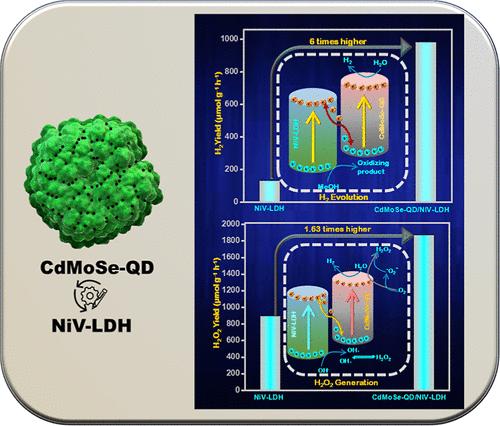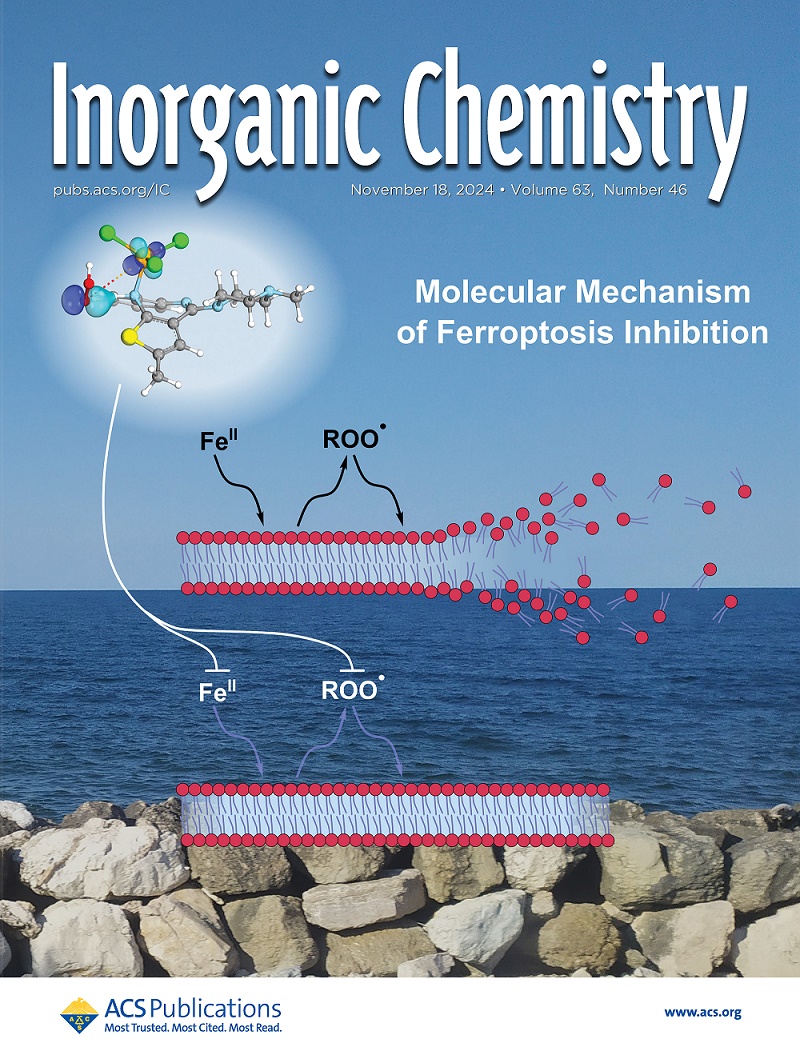Structurally Modulated NiV-LDH with CdMoSe-Quantum Dots: Unlocking the Active Centers at S-Scheme Heterojunctions for Stimulating Photocatalytic H2O2 Production and H2 Evolution
IF 4.3
2区 化学
Q1 CHEMISTRY, INORGANIC & NUCLEAR
引用次数: 0
Abstract
Designing and accumulating quantum dots (QD) onto layered double hydroxide (LDH) for the photocatalytic production of H2 and H2O2 is a formidable task. Here, we intended the synthesis procedure of CdMoSe-QD (CMS)-incorporated NiV-LDH (NV) through a facile in situ reflux method and explored the photocatalytic activities of the CMS/NV (CNV) heterostructure. CNV-1 exhibits a large interface contact area and assures excellent interfacial charge transfer ability. Moreover, CNV-1 exhibits outstanding H2 and H2O2 production rates, i.e., 6.4 and 2.5 times higher than that of pristine NV, respectively, due to formation of an S-scheme heterojunction between NV and CMS. Both NV and CMS function as n-type semiconductors and extend photoresponse to visible regions. The CNV-1 composite achieves 1.67% SCC for photocatalytic H2O2 generation and 7.36% ACE for photocatalytic H2 evolution. The excellent activity is ascribed to higher anodic photocurrent, the quantum confinement effect of CMS, large surface-active sites, and delayed recombination of excitons as supported by PL and EIS measurements. Further, the S-scheme mechanism was authenticated through a radical scavenging test and work function, evaluated by UPS measurement. Altogether, this study exemplifies the concepts of designing a CNV heterostructure, which operates via an n–n-based S-scheme mechanism and aims to enhance photocatalytic H2 and H2O2 production.

求助全文
约1分钟内获得全文
求助全文
来源期刊

Inorganic Chemistry
化学-无机化学与核化学
CiteScore
7.60
自引率
13.00%
发文量
1960
审稿时长
1.9 months
期刊介绍:
Inorganic Chemistry publishes fundamental studies in all phases of inorganic chemistry. Coverage includes experimental and theoretical reports on quantitative studies of structure and thermodynamics, kinetics, mechanisms of inorganic reactions, bioinorganic chemistry, and relevant aspects of organometallic chemistry, solid-state phenomena, and chemical bonding theory. Emphasis is placed on the synthesis, structure, thermodynamics, reactivity, spectroscopy, and bonding properties of significant new and known compounds.
 求助内容:
求助内容: 应助结果提醒方式:
应助结果提醒方式:


